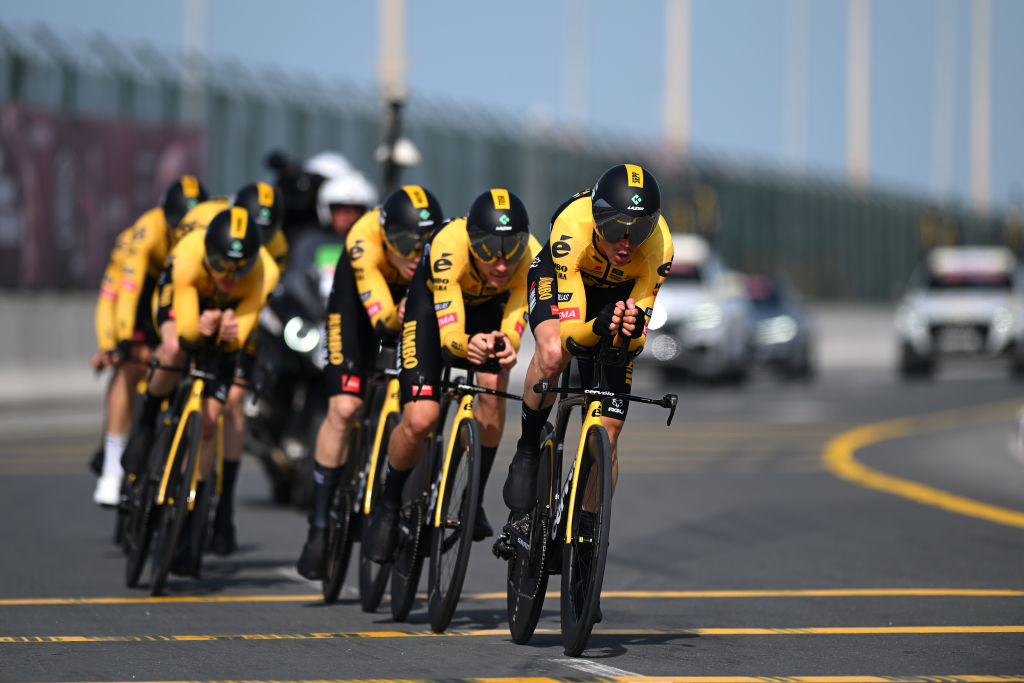The organisers of Paris-Nice have made a subtle change to the rules for the team time trial, with Tuesday’s 32.7-kilometre test in Dampierre-en-Burly being timed on the first rider of a team to cross the finish line, rather than the fourth, as is traditional.
The intended effect is to avoid another situation where a team stacks the top of the general classification, as Jumbo-Visma did in 2022 with Wout van Aert, Primož Roglič and Christophe Laporte monopolizing the top 10 after the individual time trial.
Not having to keep at least four riders together means every team will have to go into the stage with a designated leader and a clear strategy for how to maximize their effort.
The format has received a mixed reception from the riders, with UAE Team Emirates putting in extra effort even if manager Joxean Fernández Matxin told Cyclingnews that the team have dedicated a lot of time to planning for the stage and trying to get Tadej Pogačar in position to win Paris-Nice.
That included picking a team around one leader, Pogačar, and balancing aerodynamics and power output to deliver a steady effort.
“You have to minimize his efforts in the first part of the time trial, to be sure that in the last part, he can maximize them. The other riders, meanwhile, will have to race in such a way that they complete their efforts earlier in the TTT,” Matxin said.
While UAE Team Emirates have adjusted their strategy, Rohan Dennis told CyclingPro.net that his Jumbo-Visma team are staying the course.
“We’re just going to do it as we always do. We’ve got a good team, but we can’t rest on that. We’ve got to pretend we’re not that good on paper and it’s not a given we’re going to win.”
Meanwhile, Groupama-FDJ’s time trial engine Stefan Küng said he’s not a fan of the new format, saying “you start the race as a team, you finish the race as a team”.
“I think they’re imagining it’s gonna be something crazy special like they imagined a few years ago with the grid start in the Pyrenees stage, and in the end, it will be all the same scenario once again.”
Küng also suggested the team would use the typical strategy for a team time trial: “We will try to stay together as long as possible anyway because this is how you go as fast as possible in a team time trial.”
Most of the race will look the same, he said, but in the last two kilometres teams might come apart.
“It’s like false flat downhill to a bridge then the last 300 metres is like 1% uphill so you benefit if you’re more than one…
Click Here to Read the Full Original Article at CyclingNews RSS Feed…

